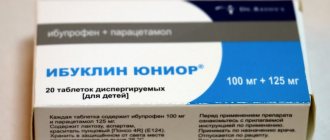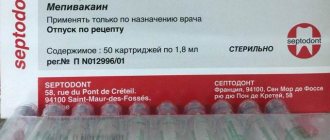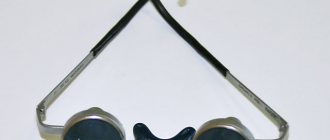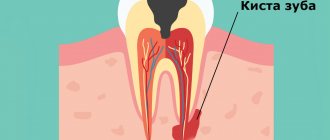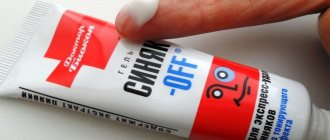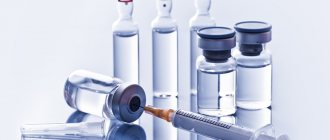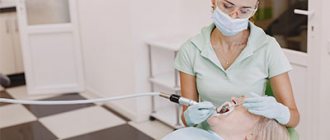Bone atrophy in the area of the alveolar processes of the upper and lower jaws is a fairly common occurrence among dental patients. This problem especially often develops in people with missing teeth (one or more). It is necessary to treat the problem as soon as possible, since it is constantly progressing and does not allow a number of surgical interventions on the teeth, in particular dental implantation.
Bone resorption is accompanied by a general deterioration in human health, as the chewing function, and therefore the digestive system, suffers. In addition, this phenomenon provokes sagging skin, deformation of facial muscles and loss of facial symmetry. In advanced situations, patients suffer from speech and even respiratory function. Elimination of atrophic phenomena in the alveolar ridges is carried out using osteoplastic operations. In such surgical interventions, the recovery period is important, improper management of which leads to the cancellation of treatment results.
General information about bone grafting
Bone grafting is a common dental surgery to restore the volume of bone tissue in the jaws. This surgical intervention allows you to restore the patient’s dentition in the most physiological way possible through dental implantation (it is carried out together with bone grafting or after it). This treatment has many advantages over the installation of removable dentures, including the aesthetics of the smile and the correct distribution of chewing loads.
There are several osteoplastic techniques:
- Splitting of the alveolar ridge (the graft is immersed in the cancellous part of the bone, where it quickly and fully takes root);
- Replanting a bone block (engraftment is a little worse, since the graft is fixed on the side of the bone where there are practically no vessels, so it is advisable to use the patient’s own tissue);
- Guided tissue regeneration (a technique in which a very high-quality graft is used, and a positive result is guaranteed by fixation of a collagen protective membrane);
- Sinus lifting (surgery on the upper jaw, which involves the bottom of the maxillary sinus).
The dentist chooses the appropriate bone restoration technique independently. But no matter what technique he chooses, recovery after surgery will be the same everywhere. The patient should not forget that the procedure itself is not a 100% result. It is equally important to follow all the dentist’s prescriptions, including taking medications after bone grafting and sinus lifting (the most common bone restoration procedure).
What is a sinus lift?
One of the most modern and safe operations to correct bone tissue in the alveolar processes is sinus lifting. It is a surgical intervention on the upper jaw, during which the bottom of the maxillary sinus is raised, and osteoplastic material is inserted into the resulting cavity. Rehabilitation after such an operation involves long-term adherence to certain rules and taking medications, for which the patient must be prepared.
Sinus lifting can be open or closed. The first involves the correction of large volumes of the alveolar ridge, and the second allows for immediate implantation of artificial roots. Sinus lift techniques are constantly being modified, so patients can be confident in the safety of surgery.
Rehabilitation after surgery
The recovery period after bone grafting and sinus lifting includes many nuances and components. Control visits to the dentist, who will assess the dynamics of rehabilitation and correct it, are important. In addition, the doctor looks at the condition of the graft and its survival rate using instrumental studies.
Recommendations during the recovery period are general and specific to the oral cavity. The general pattern of behavior after surgery includes the following principles:
- Quitting smoking;
- Limiting physical activity;
- Avoidance of air travel;
- Refusal from diving;
- Limiting ultraviolet radiation (going to the solarium is prohibited);
- Coughing and sneezing should be done with caution and with the mouth open;
- It is forbidden to blow your nose;
- You should not drink through a straw, as the pressure in the mouth increases;
- Food should be finely ground and warm, but not hot.
Particular attention is paid to proper oral care during the rehabilitation period. The dentist must instruct the patient in detail about all the nuances of this process:
- The operated area is cleaned using a cotton swab and an antiseptic solution (movements should be gentle, in the form of blotting, not rubbing);
- The teeth are cleaned with a soft toothbrush for several weeks after surgery (the postoperative wound is not affected);
- During the day, the oral cavity is treated with an antiseptic solution (but without rinsing);
- Chewing is carried out only on the healthy side (at least a few weeks after bone grafting).
However, the rehabilitation period after bone grafting and sinus lifting, as with any surgical intervention, involves taking a number of medications. The patient should not prescribe or use medications on his own, as this may cause irreparable harm to his own health.
Medicines in dental practice
Medicines used in dental practice can be divided into the following groups:
- painkillers;
- antibacterial agents;
- preparations for restoring oral microflora;
- immunocorrective and immunomodulating drugs;
- drugs that affect regeneration processes.
Nonsteroidal anti-inflammatory drugs (NSAIDs) are widely used to relieve pain. Their main effects are anti-inflammatory, analgesic, and antipyretic.
The dentist’s arsenal includes NSAIDs with pronounced anti-inflammatory activity and analgesic effects. This broad group includes acetylsalicylic acid (aspirin), diclofenac, ibuprofen, ketaprofen, naproxen, indomethacin, sulindac, etodolac, peroxicam, tenoxicam, etc.)
Currently, antibacterial therapy is used to treat periodontal diseases, oral mucosa, to prevent complications that arise during the treatment of destructive forms of periodontitis during therapeutic appointments and during surgical procedures. The route of administration of the antibacterial drug is local or systemic. Carriers of drugs for topical use are threads, gels, films. When choosing a systemic antibacterial drug, both the doctor and the patient are faced with the question of the maximum benefit and minimal negative impact of the antibacterial drug on the oral microflora. New macrolide antibiotics - clarithromycin, spiramycin, roxitomycin - have a sparing effect against stabilizing types of oral microbiocenosis such as Str.sanguinis and some diphtheroids.
In recent years, there has been a steady increase in the number of oral diseases associated with a violation of the biological balance between the macroorganism and different populations of microbial flora.
The most pronounced disturbances of microbiocenosis are observed in patients with lichen planus of the oral mucosa, aphthous stomatitis, candidiasis, glossalgia, periodontal diseases, desquamative glossitis and leukoplakia; it most often occurs and develops in patients with secondary immunodeficiency.
The main place among treatment methods is occupied by phage therapy (coliproteus, klebsiella, staphylococcal, streptococcal and pyobacteriophages.) Antifungicidal drugs (Diflucan, Lamisil) are used to suppress fungal infections. Eubiotics and probiotics are new preparations containing lacto- and bifidobacteria to restore the microbiocenosis of the cavities of the human body: “Acilact”, “Bifidumbacterin”, “Lactobacterin”, “Normaze”.
Immunocorrective and immunomodulating drugs are drugs without which it is now practically impossible to treat any disease of the oral mucosa and periodontal tissue.
correction is made with immunostimulants of natural origin (lycopid, lysozyme, imudon, etc.), as well as synthetic drugs (levamisole, diucifon, etc.).
Correction with immunostimulants of natural origin is more often used
Regeneration stimulants
Medicines that ensure the normalization of metabolic processes in the epithelium of the oral mucosa and skin are called keratoplastics. These drugs protect against irritation, have a nonspecific anti-inflammatory effect, and have an enveloping property. These are widely known vitamin preparations (retinol, tocopherol acetate, aevit, aekol, etc.) and nonspecific regeneration stimulants of plant and animal origin (sea buckthorn oil, rosehip oil, carotolin, oblecol, proposol, solcoseryl, actovegin, etc.).
What medications should I take?
The rehabilitation period after bone grafting and sinus lifting includes the mandatory use of certain groups of medications. The doctor prescribes individual representatives individually, but the general scheme during rehabilitation is as follows:
- Antibacterial agents. Every patient takes such medications after bone grafting and sinus lifting, as they represent the main prevention of the development of an infectious process. The standard course involves a five-day intake of broad-spectrum agents.
- Antihistamines. These medications help reduce the activity of the inflammatory process and, accordingly, reduce the edema syndrome. They are taken for 3 days in a standard dosage.
- NSAIDs. Nonsteroidal anti-inflammatory drugs help reduce swelling and inhibit the production of inflammatory mediators. On average, such medications are taken for 3-4 days.
- Analgesics. Painkillers are not included in the course of pathogenetic and etiological therapy during the recovery period, since they relieve only the symptom of pain. They are taken during the first week after surgery (during this period the discomfort should completely disappear) or even less. The doctor himself selects the appropriate drug for the patient and prescribes its dosage. It is forbidden to exceed the maximum daily dose and drink large amounts of medicine at a time. If the doctor forgot to tell you about the rules for taking analgesics, then the patient follows the instructions.
- Healing ointments. Special means to accelerate regeneration are used topically - smeared on the postoperative wound. Their use increases the regenerative abilities of tissues, and epithelization occurs faster. The doctor prescribes one, and sometimes even two drugs, which should be used according to a certain scheme.
- Antiseptic. A solution of Chlorhexidine or any other antiseptic is used for oral care. It is forbidden to rinse your mouth, but it is recommended to treat it and the wound surface in particular with this product after each meal.
- Calcium preparations. Bone grafting involves damage to bone structures. In addition, the condition of the teeth also requires some kind of replenishment. Not only calcium supplements, but also foods rich in calcium do an excellent job of this. This includes: cottage cheese, sour cream, milk and other dairy products.
- Vitamin C. Ascorbic acid helps not only improve immunity, as many believe, but also accelerate regeneration and improve overall metabolism. It is an indispensable component of any course that involves exhaustion of the body.
Each of the listed drugs helps to shorten the rehabilitation period and its successful course. You cannot ignore any of the dentist’s prescriptions, as this can lead to the development of various complications and unfavorable outcomes.
NON-STEROID ANTI-INFLAMMATORY DRUGS IN DENTISTRY
Sologova Diana Igorevna Puntovaya Kristina Dmitrievna Federal State Autonomous Educational Institution of Higher Education “First Moscow State Medical University named after. THEM. Sechenov Ministry of Health of Russia" (Sechenov University)
EFFECTIVENESS OF NSAID USE
In terms of the strength of the analgesic effect, Ketorolac is significantly superior to other NSAIDs. The drug does not depress respiration, does not affect opioid receptors, does not cause drug dependence, and does not have a sedative or anxiolytic effect. It is also important that the drug begins to have an analgesic effect within 15–30 minutes. after reception. The drug is recommended for use as a means of pathogenetic and symptomatic therapy in the conservative and surgical treatment of generalized periodontitis. With its use, earlier relief of pain and signs of local inflammatory reaction (swelling and bleeding of the gums) are recorded. The drug is also capable of reducing the rate of bone tissue resorption, incl. and in the presence of microorganisms, which is a significant factor in favor of including the drug in the pharmacotherapy regimen for periodontitis.
In addition, because Ketorolac has high analgesic activity; it is used as an alternative to narcotic analgesics for moderate or severe pain after surgery in the maxillofacial area.
- Ketoprofen is a powerful non-steroidal anti-inflammatory drug.
It relieves pain well and helps with most of these symptoms, and also relieves inflammation in soft tissues. In addition, ketoprofen helps lower the temperature if it is elevated due to some serious pathology. It is used in the form of a rinse solution - symptomatic treatment of inflammatory diseases of the oral cavity, such as stomatitis, glossitis, gingivitis, periodontitis, periodontal disease, for analgesia during the treatment and extraction of teeth (as an auxiliary drug). Ketoprofen relieves pain quite quickly, but this is not enough. It does not affect the cause of the disease (caries, pulpitis or periodontitis). The main danger of the drug is that a person can suppress the pain for a very long time and not go to the doctor, and this will lead to complications both for dental diseases and for the whole body (possible development of dizziness, lethargy, vomiting, nausea, abdominal pain) .
Ketoprofen in the form of a 1% cream, when applied 1.8 ml once a day for 6 months to the gum area of rhesus monkeys with periodontitis, promoted the restoration of alveolar bone and significantly reduced the levels of PGE2 and LT B4 in the periodontal fluid (after 2 and 3 months of treatment ). The drug in the form of a 2% gel, when applied to the gums of patients with chronic periodontitis in addition to instrumental therapy, contributed to a significant reduction in probing depth.
- Nimesulide . Toothache is not a direct indication for taking this drug.
The drug is used primarily for rheumatic diseases that affect the joints and surrounding tissues. The action of the medicine is aimed at eliminating the symptoms of inflammation, which include pain, incl. and dental. But it must be remembered that the effectiveness of Nimesulide depends on the reason for the toothache. In severe dental pathologies, even potent analgesics cannot eliminate the symptom.
It is effective to use the drug for gingivitis, because it eliminates swelling and helps normalize local temperature. The effect after administration is observed quite quickly; on average, it begins to act within 25–30 minutes. The analgesic effect lasts for a fairly long period of time - up to 10 hours.
Important! The medicine is also characterized by a number of disadvantages: it cannot be used during pregnancy and children; it is not intended for long-term use; there is a possibility of addiction; toxic effects on the liver; potential - overdose and poisoning.
- Ibuprofen inhibits the synthesis of prostaglandins, which, in turn, increase the sensitivity of nociceptive receptors.
Due to this, pain is reduced, but the effect is temporary (lasts up to 12 hours). You can take the drug for toothache, but no more than 5 days in a row.
The administration of Ibuprofen to patients with chronic periodontitis after 14 days was accompanied by a significantly more pronounced reduction in bleeding and hyperemia of the gums, as well as the depth of periodontal pockets compared to the group without pharmacotherapy.
Use of NSAIDs:
- for acute pain resulting from advanced caries or pulpitis;
- before hygienic procedures (removal of hard deposits, bleaching), with an increased pain threshold in the patient;
- to relieve pain that occurs after treatment;
- to eliminate pain during the period of getting used to braces, prosthesis and other structures;
- in inflammatory processes in the soft tissues of the oral cavity (periodontitis, periodontitis, stomatitis).
You should not take NSAIDs if:
- intestinal diseases;
- pregnancy more than 24 weeks;
- liver and kidney failure;
- Do not lie;
- blood clotting disorders;
- recently undergone SS operations.
In order to avoid intoxication and negative effects on the gastric mucosa, it is necessary to take the drug after meals.
NSAIDs. GENERAL CHARACTERISTICS
Nonsteroidal anti-inflammatory drugs (NSAIDs) are a group of medications that are widely used in clinical practice, many of which can be purchased without a prescription. More than thirty million people worldwide take NSAIDs daily, with 40% of these patients over 60 years of age. The great popularity of NSAIDs is explained by the fact that they have anti-inflammatory, analgesic and antipyretic effects and bring relief to patients with corresponding symptoms (inflammation, pain, fever), which are observed in many diseases. The use of the term “non-steroidal” emphasizes their difference from glucocorticoids, which have not only an anti-inflammatory effect, but also other, sometimes undesirable properties of steroids.
Over the past 30 years, the number of NSAIDs has increased significantly, and currently this group includes a large number of drugs that differ in their characteristics of action and use.
More than 60 million packages of Ibuprofen and Ketorolac, more than 25 million packages of Diclofenac, and almost 20 million packages of Nimesulide are sold annually in Russia.
The main mechanism of action of NSAIDs is the suppression of the activity of cyclooxygenase (COX), an enzyme that regulates the conversion of arachidonic acid into prostaglandins (PG), prostacyclin (PG12) and thromboxane (TxAg). The nature of the effect of NSAIDs on the COX isoforms—COX-1 and COX-2—is especially important. COX-1 is constantly present in most tissues (albeit in varying quantities) and belongs to the category of “constitutive” (“structural”) enzymes that regulate the physiological effects of PG. COX-2 plays the role of a “structural” enzyme only in some organs (brain, kidneys, bones, reproductive system in women), and is not normally found in other organs. However, the expression of COX-2 increases significantly under the influence of immune mediators (cytokines) involved in the development of the immune response, inflammation, cell proliferation, etc.
Inhibition of COX-2 is one of the important mechanisms of anti-inflammatory and analgesic activity, and COX-1 of the toxicity of NSAIDs. Non-selective NSAIDs inhibit the activity of both COX isoforms to the same extent and therefore have approximately similar effectiveness. This discovery served as the basis for the creation of a new group of NSAIDs that predominantly inhibit COX-2 (selective COX-2 inhibitors). They have all the positive properties of non-selective NSAIDs, but are less toxic, at least in relation to the gastrointestinal tract. Based on their selectivity of action against COX isoforms, NSAIDs are divided into 4 groups (Table 1).
Table 1 Classification of NSAIDs by selectivity of action on COX isoforms
| Group | Active ingredients |
| Non-selective COX inhibitors | Indomethacin, ibuprofen, diclofenac |
| Selective COX-1 inhibitors | Low doses of acetylsalicylic acid |
| Selective COX-2 inhibitors | Coxibs (celecoxib, rofecoxib, valdecoxib, etc.); Meloxicam, nimesulide, etodolac |
| Selective COX-3 inhibitors | Paracetamol, metamizole sodium |
In addition, NSAIDs are classified depending on the severity of their anti-inflammatory activity and chemical structure. The first group includes drugs with a pronounced anti-inflammatory effect. NSAIDs of the second group, which have a weak anti-inflammatory effect, are often designated by the terms “non-narcotic analgesics” or “analgesics-antipyretics” (Table 2).
Table 2 Classification of NSAIDs depending on the severity of anti-inflammatory activity and chemical structure
| NSAIDs with pronounced anti-inflammatory activity | |
| Acids | |
| Salicylates | Acetylsalicylic acid Diflunisal Lysine monoacetylsalicylate |
| Pyrazolidines | Phenylbutazone |
| Indoleacetic acid derivatives | Indomethacin Sulindac Etodolac |
| Phenylacetic acid derivatives | Diclofenac |
| Oxycams | Piroxicam Tenoxicam Lornoxicam Meloxicam |
| Propionic acid derivatives | Ibuprofen Naproxen Flurbiprofen Ketoprofen Tiaprofenic acid |
| Non-acid derivatives | |
| Alcanons | Nabumethon |
| Sulfonamide derivatives | Nimesulide Celecoxib Rofecoxib |
| NSAIDs with weak anti-inflammatory activity | |
| Anthranilic acid derivatives | Mefenamic acid Etofenamate |
| Pyrazolones | Metamizole Aminophenazone Propyphenazone |
| Para-aminophenol derivatives | Phenacetin Paracetamol |
| Heteroarylacetic acid derivatives | Ketorolac |
NSAIDS IN DENTISTRY
According to Orenburg State University, the list of the most commonly used non-steroidal anti-inflammatory drugs in dental practice in tablet form as of 2015 was as follows (Fig.):
- Ketoprofen - prescription frequency 56%, duration of action 6 hours.
- Ketorolac - prescription frequency 20%, duration of action 4-5 hours.
- Nimesulide - prescription frequency 14%, duration of action 5 hours.
- Ibuprofen - prescription frequency 8%, duration of action 4 hours.
- Metamizole sodium - prescription frequency 2%, duration of action 4 hours.
Rice.
In dental practice, NSAIDs are widely used for inflammatory diseases of the maxillofacial region and oral mucosa, inflammatory swelling after injuries, operations, pain syndrome, arthrosis and arthritis of the temporomandibular joint, myofascial pain syndrome of the maxillofacial region, neuritis, neuralgia, postoperative pain, feverish conditions.
